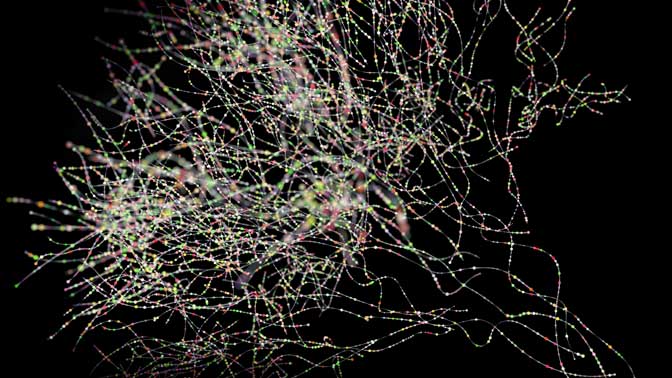
Krembil researchers, led by Senior Scientist Dr. Michael Reber, have constructed the first computational model that describes the molecular and cellular mechanisms of visual connectivity organization in the brain.
The model simulates and predicts the organization of visual connectivity in the brain and how different networks of neurons interact with one another, which is very important for our daily functioning—in particular, for our ability to visualize and comprehend our surroundings.
The model is based a ‘three-step’ map alignment algorithm. The algorithm serves as a set of programming and mathematical instructions for constructing a visual map. The benefit of the three-step approach is that it closely mimics the three steps taken by the brain to process visual information.
The three steps defined in the algorithm and taken in the brain are 1) the formation of a visual map from information sent from the eye to a region of the brain known as the superior colliculus; 2) the incorporation of complementary information from the visual cortex, which is the main area in the brain the processes visual information, and 3) the ‘alignment’ of the visual information so that it makes sense to the brain.
Findings from the computational model were compared to those from real-life biological models. The results revealed that errors that arise in certain neurological conditions can be faithfully recreated in the computational model.
Commenting on the new model, Dr. Reber says, “This work is essential for recreating and ultimately predicting what can go wrong in the connections between the eye and brain. Our model has the power to ‘connect the dots’ between how biological parameters—such as the concentration or the function of a particular molecule, or the number of cells—affect visual perception. In the future, our model could reveal what happens to neural connections in diseases such as age-related macular degeneration, glaucoma or diabetic retinopathy—ultimately shedding light on new therapeutic approaches to improve vision.”
This work was supported by The University of Strasbourg Institute for Advanced Study, The French National Centre for Scientific Research (CNRS), the Donald K. Johnson Eye Institute, the Krembil Research Institute, and the Toronto General & Western Hospital Foundation.
Savier EL, Dunbar J, Cheung K, Reber M. New insights on the modeling of the molecular mechanisms underlying neural maps alignment in the midbrain. Elife. 2020 Sep 30;9:e59754. doi: 10.7554/eLife.59754.

The senior author of the study, Dr. Michael Reber (pictured) is a Senior Scientist at the Krembil Research Institute.




